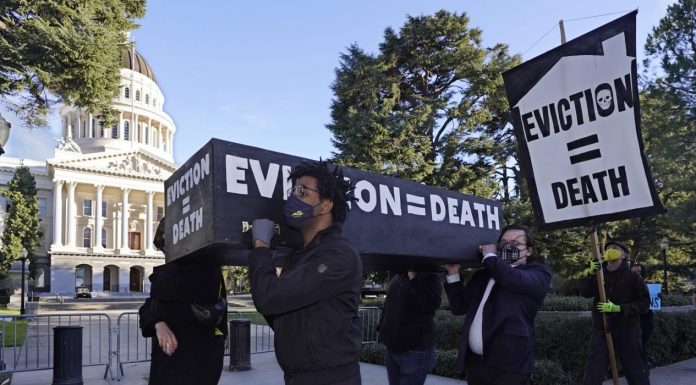Following the US Supreme Court‘s overturning of a dubiously extended nationwide eviction moratorium, the Department of Housing and Urban Development remains entrenched in its resolve to solve an eviction crisis that does not exist.
Specifically, HUD is in the final stages of publishing a new rule in the Federal Register to guard renters against a phantom COVID-19 “evictions spike” in disease-heavy regions.
The rule is straightforward: It would require individuals and entities that rent to HUD-subsidized tenants to provide both 30 days’ notice and information about available federal emergency rental assistance before they can evict non-paying renters. This rule covers those in public housing, too.
In short, the rule sets conditions on private contracts, and it will impact millions of Americans starting 30 days after its publication this week, which will give federal money for housing problems—evictions included—more time to circulate throughout the country.
The Biden administration’s ongoing actions to extend the eviction pause raise important constitutional questions, particularly about the suspect authority of the Centers for Disease Control and Prevention—a health-based agency—to issue guidance on topics seemingly outside its purview.
Critics have also pointed out that actions in and of themselves are worrisome because, at a fundamental level, the government is asserting the right to intercede in private business agreements and contracts—and to restructure their terms in novel ways, in any form it so fancies.
Most striking, however, is that the concern that purportedly animated the administration’s actions on evictions—i.e., that there would be a massive uptick in cases and deaths in the areas of the country with high COVID rates if the moratorium did not get extended—never materialized.
Nevertheless, the Biden administration persists on its project to protect the public from this fake disaster.
To look quickly back over the recent history of the moratorium dispute, it must first be said that the original rules around evictions were legal as they were passed by Congress as part of the COVID-19 relief bill.
However, this buffer against evictions was a time-limited and targeted stopgap.
For this makeshift solution to address other issues, or simply to remain in effect past its termination date, Congress would need to pass a law.
House Speaker Nancy Pelosi, D-Calif., pointedly declined to do so when she had the chance, so the law should have expired.
Instead, the CDC, under directions from the Biden administration, issued an extension on the moratorium that triggered a series of legal challenges.
Legality aside, the thought process behind the action is clear: The administration took this extraordinary step to protect renters from a potentially chaotic situation in which thousands of Americans would be evicted and potentially exposed to a deadly virus.
President Biden himself openly doubted the legality of this unilateral extension; he even told reporters that the order was “not likely to pass constitutional muster”—a shocking admission by the president whose task is to protect the Constitution. And that job description includes not subjecting it to undue stress, which this doomed lawsuit certainly did.
Because the Supreme Court forbade the CDC from illegally setting housing policy, the administration—which caused the entire mess—went through HUD, which made and will soon publish a rule to address a crisis that does not exist.
One is left to wonder why the administration is pushing forward with a new, pointless rule.
A cynic might say that it provides a new opportunity to spend money.
This may be true, but a deeper look at the history around the supposed spike reveals that it was a major concern of ‘experts’; naturally, media corporations echoed the same claim for months.
It may be that Biden is still acting as though there is a looming COVID-19 spike courtesy of the eviction moratorium because doing so protects the credibility of the media-experts-bureaucrats complex that has been so helpful to the president — particularly last year during the election.
If this is the case, then it would seem to some degree that the US is more a media-run state than a republic governed by the Constitution.

